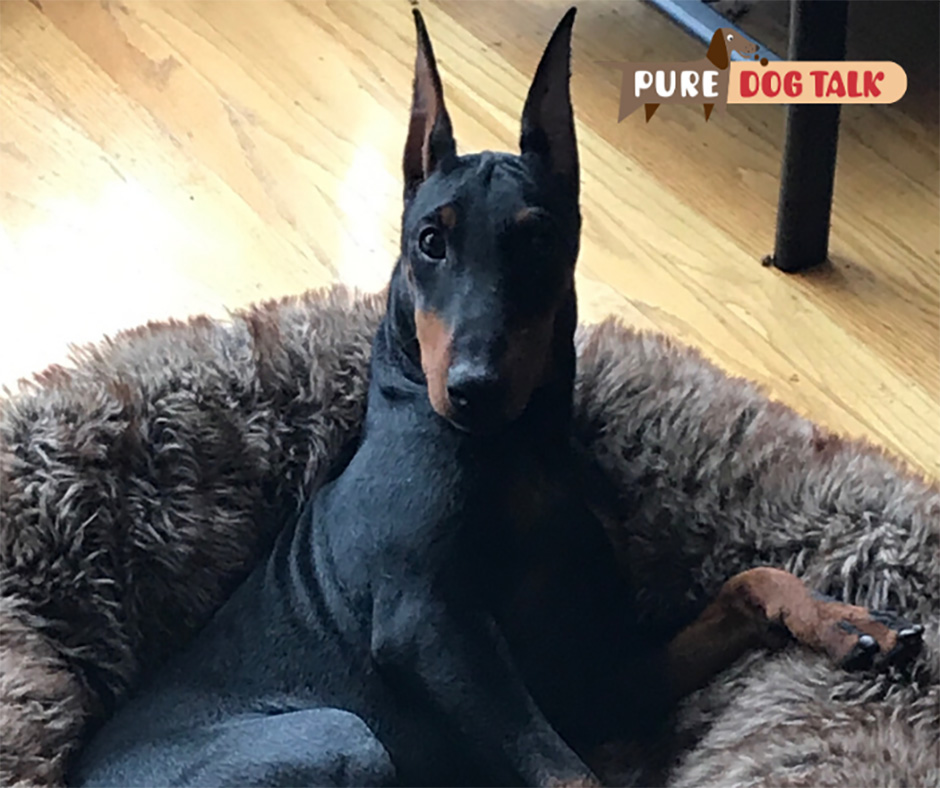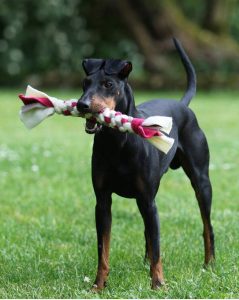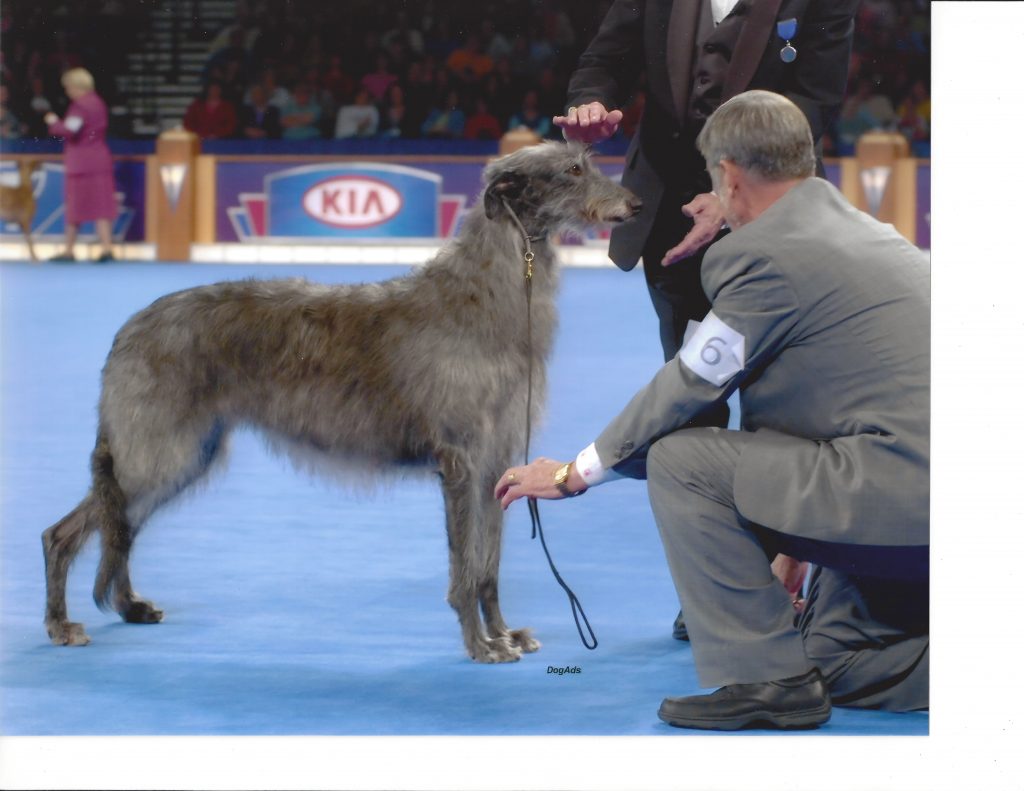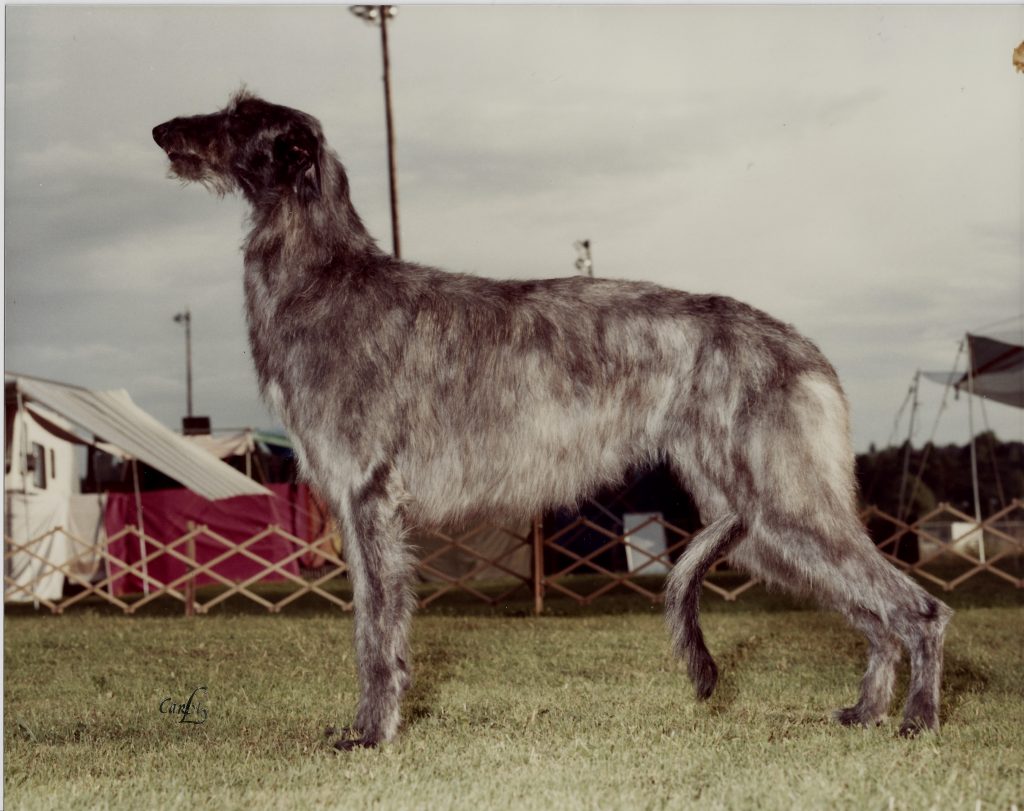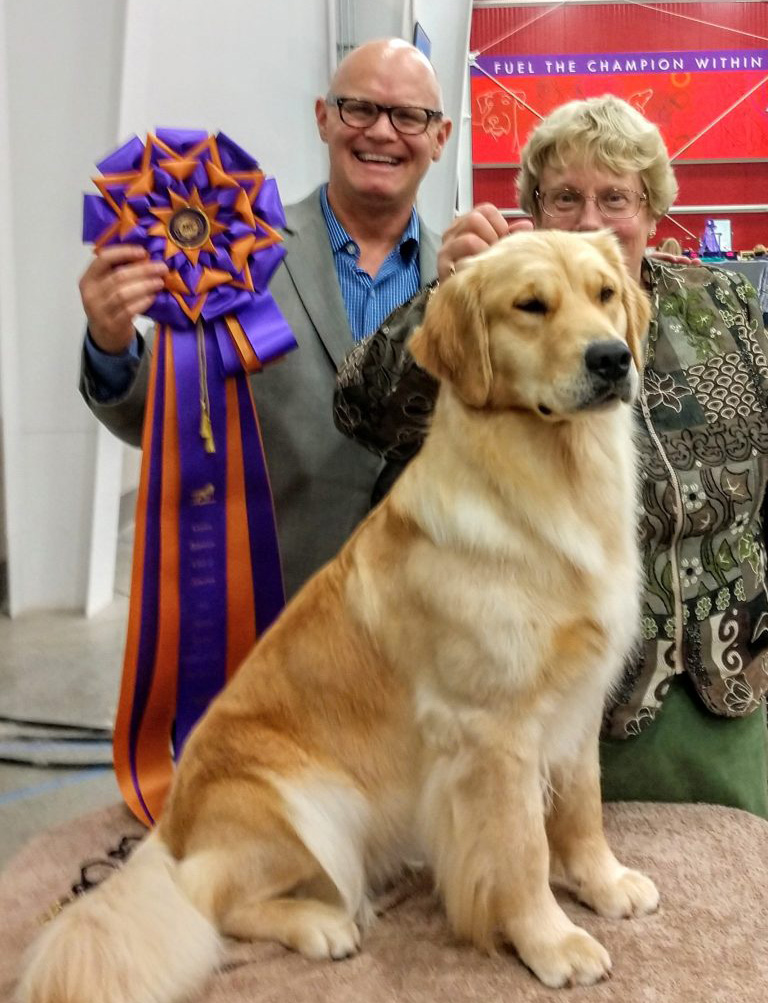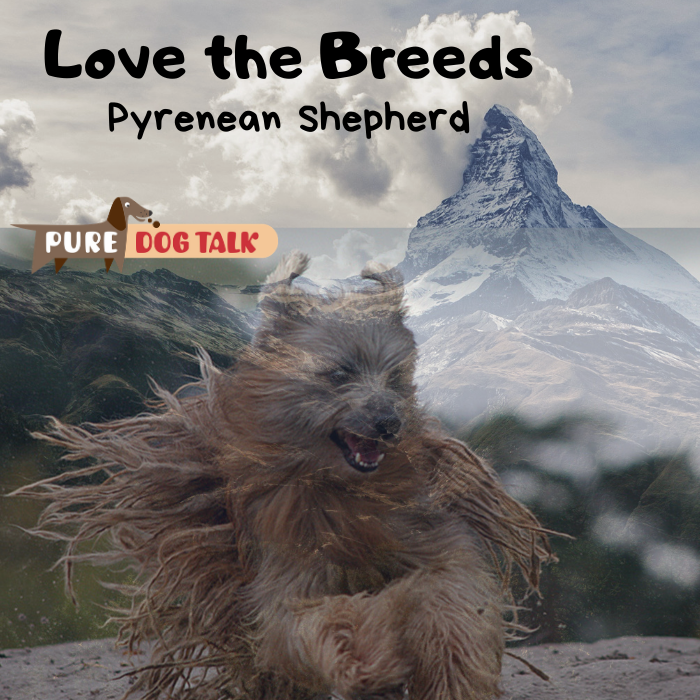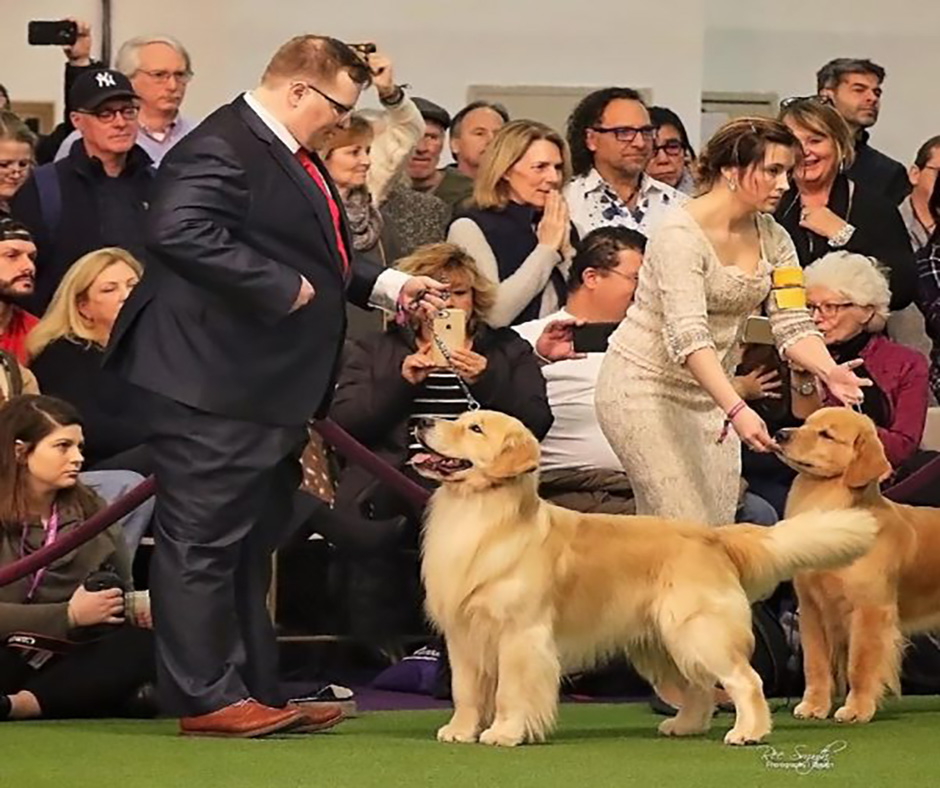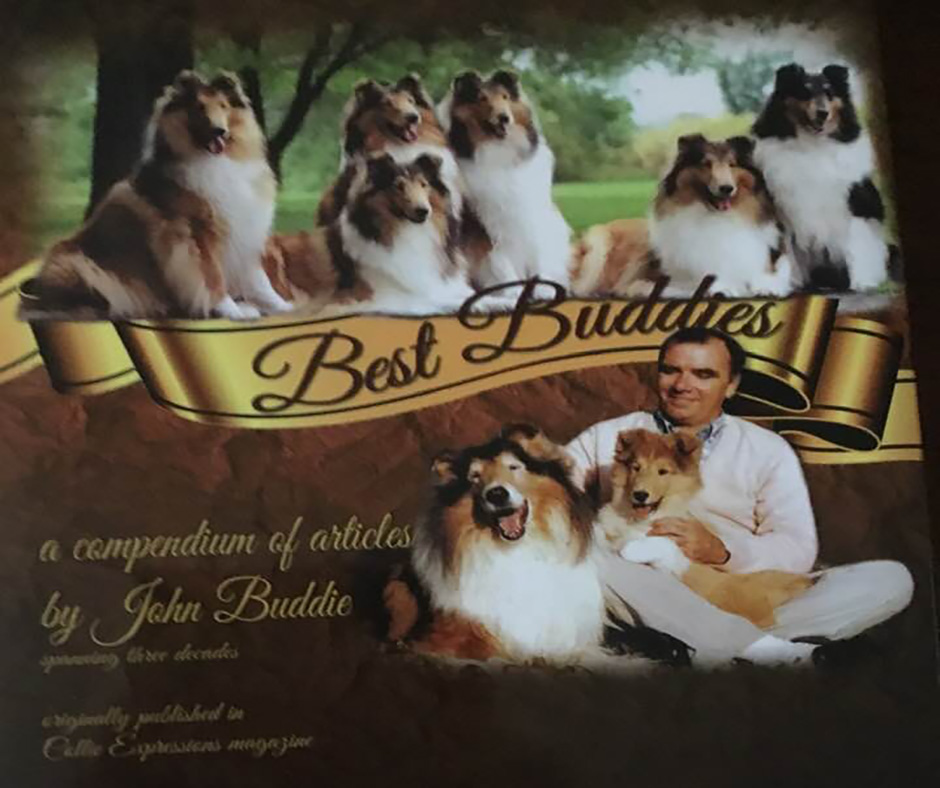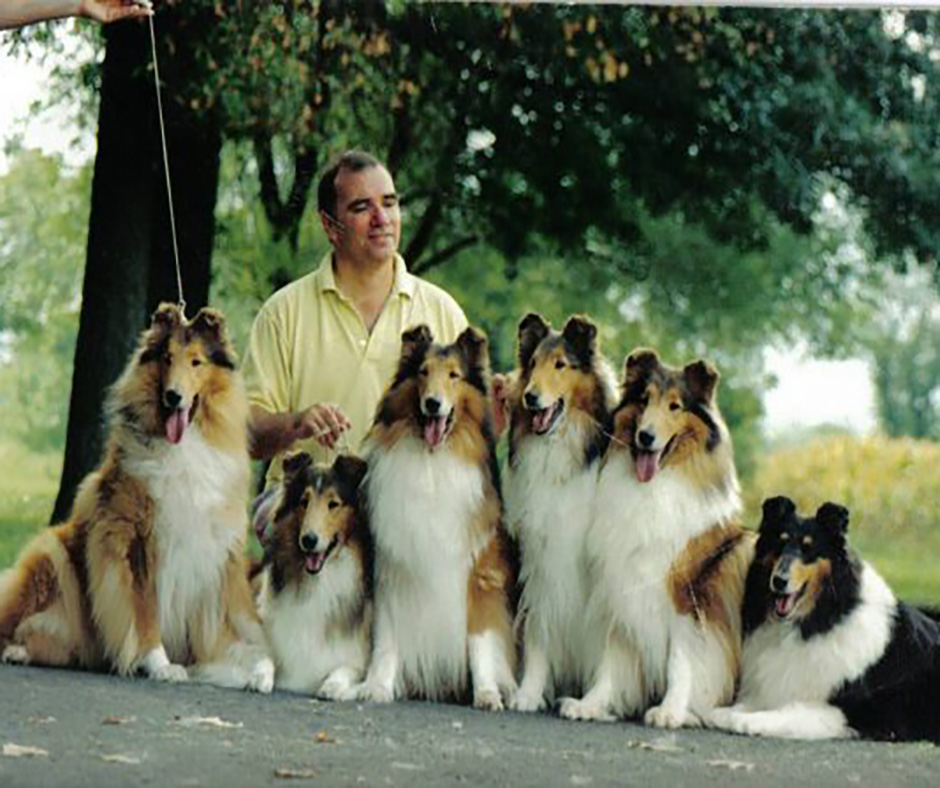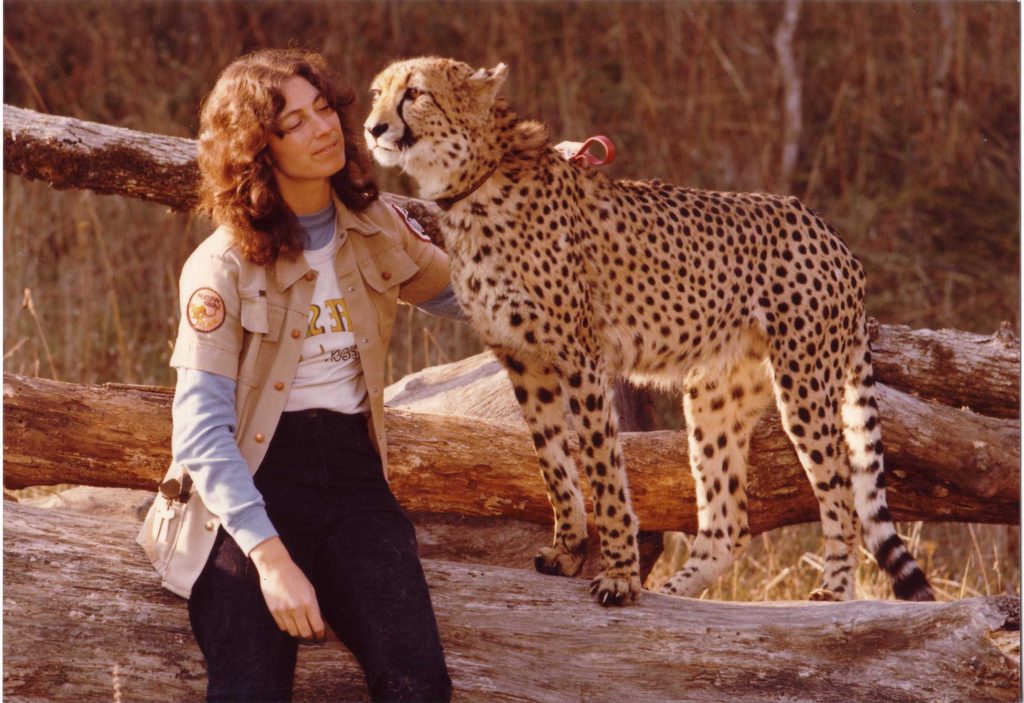Posts by Laura Reeves
338 — Intestinal Blockages: Prevention, Treatment, Recovery
Intestinal Blockages: Prevention, Treatment, Recovery
Dr. Marty Greer DVM shares some horror stories of what and why dogs eat things they shouldn’t that cause intestinal blockages. An ounce of prevention is worth a pound of cure, Greer said.
Puppy Proof Your House
Puppies explore their environment with their mouths, Greer noted. “If it’s smaller than their head, they may swallow it,” she said.
Be careful with your pets’ access to anything they can eat, bottom line. The dog that eats things often will repeat the behavior. The owners need to learn from the dog’s mistakes and be sure their environment is safe.
Even a crated dog isn’t always out of danger — be sure not to put anything on or near the dog’s crate.
Retrievers at High Risk
Teaching young dogs to trade something inappropriate in their mouths for a treat is a helpful way to set the dog up for success and avoid dangerous blockages.
Induce Vomiting
We have all been told to use hydrogen peroxide to make the dog vomit if you see it eat something inappropriate. Greer strongly recommends, instead, a trip to the vet for a dose of Apomorphine. This is a safer alternative than the peroxide, which can have dangerous side effects.
Difficult Diagnosis
Even when you suspect the dog might have eaten something, the x-rays are not always successful at showing a blockage. Cloth and non-metal items won’t show up.
A lethargic dog that doesn’t eat and has repeated vomiting, can’t keep down food or even water, is one that is going to be suspect for a blockage.
Pregnancy Increases Danger
Pregnant bitches may have nausea that they will try to assuage by eating whatever they can get ahold of, Greer said. Hyper awareness with them is imperative.
Treatment
Intestinal blockage is a life-threatening situation. The dog will need emergency and often exploratory surgery. The recovery is extended and difficult. After surgery, the dogs are required to stay on IV fluids for 48-72 hours.
337 – Black & Tan Dynamos: The Wash & Wear Manchester
Black & Tan Dynamos: The Wash & Wear Manchester
The Manchester Terrier has two varieties, Standard and Toy, both descended from the extinct black and tan terrier, according to a panel of experts at the American Manchester Terrier Club National Specialty.
The Manchester’s job was to hunt rats and other vermin in England and they retain the high prey drive today. Our experts encourage new owners to be sure their Manchester is on lead when outside a fenced area.
“You can have a good recall, but a squirrel will always take precedence,” said Marla Zoz.
Key Manchester Points:
- High drive, are food motivated but easily distracted.
- Very smart, pick up new skills quickly.
- Get very attached to their people. Suitable for a house or apartment.
- Need lots of physical activity.
- Require a lot of attention.
- Love being a part of the family.
- Need to spend time to develop well balanced companion.
- Low maintenance grooming… nails, clean teeth, wash and wear.
- Longevity – 15+ years.
- Health issues include cardiomyopathy and vWD, a bleeding disorder. When visiting with a potential breeder, be sure to ask if he/she is testing for these conditions with available DNA tests.
Standard Manchester Terriers are allowed to have naturally erect ears, button (shown here) or cropped. Toy Manchesters are only shown with naturally erect ears.
“You want to go, they’re ready at a moment’s notice. You want to cuddle on the couch, they’re right there,” said Jim Burrows.
These dogs are terriers, whether standard or toy sized, our panelists noted. They can “talk a lot.” Everyone agreed that the “four-footed burglar alarm” breed can be vocal. “They’re going to bark if they see something they don’t know,” Burrows said.
While generally aloof with strangers, the Manchester will warm up to new folks quickly. The breed needs a lot of socializing to develop a well-rounded dog, the breeders all agreed. Dog aggression, typical of many terriers, is manageable with appropriate socializing and training.
336 – 20th Century Secrets in a 21st Century Format, Jaraluv
20th Century Secrets in a 21st Century Format, Jaraluv
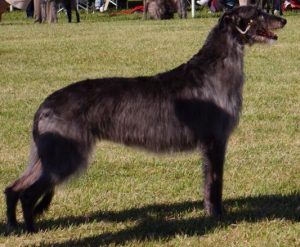
MBIS Ch. Jaraluv Ouija – Faith’s daughter who holds the BIS record for Deerhounds in the US with 21 All Breed BIS. Pictured here at 8 years at the SDCA national specialty.
Part two of the powerful interview with Ray and Jana Brinlee of Jaraluv Scottish Deerhounds applies their breeding secrets to today’s society. The small number operation modeled by the Brinlees is far more applicable to today’s world than the huge kennels maintained in the heyday of the sport.
“We need breeders to mentor new people,” Ray said. “There might be 20 good breeders and 80 people who breed dogs. There’s a difference.”
Ray’s solution to the “more exhibitors, fewer breeders” matrix that is at the center of dog show’s perceived decline is – it’s part of mentorship
“Breeders need to encourage pet people to show dogs,” Ray said. “We need breeders to tell folks, ‘that’s a heck of a dog I sold you, let’s try this, let’s go to this show, don’t waste those genes.”
The subjective nature of dog shows often is a driving force for exhibitors who turn to companion events, but the Brinlees see a different perspective.
“The difference is, as a breeder, you are doing it for the love of the breed,” Jana said. “You are trying to maintain the breed in the best way you can. All these other events are nice, they are fun, but they are not about preserving or maintaining your breed.”
Form IS Function
“We have to be concerned about the function of our dogs,” Ray noted “but many of our breeds are not allowed to do their historical jobs.” The Deerhound, for example, hunted in mountainous terrain. The flat track racing style of lure coursing doesn’t accurately test the breed’s function, Jana observed.
On the other hand, Ray contends that the classic “Deerhound movement…. Easy, active, true… if they do that, they will get around eight hours with the Hunt Masters hunting deer.”
Breed standards were written to describe the dogs that were best at their job. “We have to rely on that written word and be careful when you read it. That scares me about the generic show dog judging … the race to get more breeds makes me uncomfortable,” Jana said.
“It is important to us breeders that judges are a custodian for our breeds,” Ray added.
Listen to part one of the interview here.
335 – Jaraluv Scottish Deerhounds: 7 Secrets to Success
Jaraluv Scottish Deerhounds: 7 Secrets to Success
Ray and Jana Brinlee, Jaraluv Scottish Deerhounds, have a truly notable record. Breeding on a very limited basis since the early 1980s, they have produced a total of 94 dogs. Of which, 75 are champions of record and 11 are Best in Show Winners. A 12 percent ratio of BIS winners to puppies produced is remarkable in any breed, never mind an aloof, tousled sighthound.
The Brinlees are world-renowned for producing a very identifiable style of Deerhound. They were selected as AKC Hound Breeder of the year in 2016. In this part one of a two part interview, Ray and Jana share what developed very organically through their time in the breed, which they have distilled into seven “secrets to success” for any breeder.
Secrets to Success
- Imprint
- Experience, mentors
- Foundation stock
- Dedication and commitment
- Breeding plan
- Presentation
- Sharpen the Saw
Imprint the image of perfection in your breed in your mind’s eye. Be SURE that the vision you breed to is accurate to the standard!
Gain experience and seek mentors who will guide you, both in the breed and in other breeds. These folks can give you direction and encouragement.
Start with the best foundation stock you can get your hands on. Whatever your goals are, start with best and do the research to find complementary breedings.
Breeding dogs successfully requires dedication and commitment of time, money and effort. As Jana notes, nobody is getting rich doing this.
Every breeder needs a breeding plan. This is a point of distinction that is worth noting. Plan ahead. KNOW what you want to do and how you want to do it. Admittedly plans can change, but start with a plan and work the plan for the best chance of success. Outcross? Linebreeding? What’s your plan?
Presentation is a major key to success. If you’re breeding show dogs, they need to be in condition, in proper weight and trim and they need to be immaculately presented whether that is by an amateur or a professional, don’t ask judges to “find the diamond in the rough.”
Sharpen the Saw is a great “Rayism”… Ray describes this as a wrap up, as a continuing striving for success. Of knowing history – “you can’t mow the lawn in the dark because you can’t see where you’ve been.”
Join us for Part 2 on Thursday of this valuable series.
334 – Golden Retriever Breed Education with Michael Faulkner
Golden Retriever Breed Education with Michael Faulkner
In honor of the Golden Retriever National Specialty, currently under way in Southern California, Host Laura Reeves visits with legendary judge and breeder Michael Faulkner. Actively involved with Goldens since 1969, Faulkner is deeply passionate about his breed.
Primarily a hunting dog
“This is the GOLDEN Retriever,” Faulkner said. “They have a coat of lustrous gold, they are a water dog, their form and function is to retrieve.
“The standard says ‘primarily a hunting dog,’ moderate, to be shown in good, hard working condition,” Faulkner said
“Yellow Wavy Coated Retrievers”
The double coat protects and wraps the body, Faulkner said. Early historians talk about the development in Scotland of “yellow, wavy coated retrievers.”
“Quite often when you’re judging my breed you’re going to see a coat that wraps the body and it may have a slight wave. That’s perfect. We love it when you can see the natural wrap and frame. The coat should never be curly, but wave is perfectly acceptable,” Faulkner said.
Moderation in all things
Faulkner compares the correct Golden Retriever to a cow: “Moderate, legs underneath them, big rib cage, short loin, level back, thick thigh, tail straight off the back. It’s not a complicated breed.”
A well-known stickler and “old guard” in the breed, Faulkner insists that Goldens were never meant to be “fluffy” and that they “should not look like a baby Newfy.”
Proportions are the biggest thing next to grooming, Faulkner said. The breed standard calls for the body to be [12:11], just off square. They should never be long and low.
Gentleman’s gun dog
“The dogs are not supposed to roll, or lumber (when they move),” Faulkner said. “They are supposed to converge to the center line of travel. People forget that they are supposed to be primarily a hunting dog.
“They were kept by the nobility. Bred to go out with the hunter, work close to their side, bring the bird back, shake dry and lie next to fire.”
The cold water and rocky terrain of the breed’s native Scotland made endurance essential, Faulkner noted. Any exaggeration would hinder the working dog’s efficiency.
333 – Pyrenean Shepherd: Small, Smart, Rare
Pyrenean Shepherd: Small, Smart, Rare
Pyrenean Shepherd fancier Joni McKeown shares details of this endangered herding breed from the Pyrenees mountains of France.
The small herding breed accompanied the Great Pyrenees guarding the flocks that moved between the isolated and remote regions of the mountains and valleys.
“When people come to shows, everyone thinks they are cute. They have a mischievous, funny sense of humor, and a really cute little head, but this is a working dog. It should not just be a pretty face,” McKeown said.
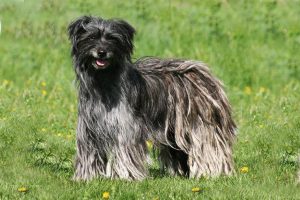
A brindle PyrShep showing cording on the back half of the dog as is correct.
From the AKC website: These tough, lean, and lively herders, famous for their vigorous and free-flowing movement, come in two coat varieties: rough-faced and smooth-faced. Roughs have profuse, “windswept” hair above the muzzle and a generally harsh coat; smooths have short facial hair, a finer-textured coat, and a slightly longer, pointier muzzle. Both varieties of this sinewy, rectangular breed come in many colors and patterns. Pyr Sheps see the world through dark almond-shaped eyes conveying an alert and cunning expression.
PyrSheps are a prime example of why pet owners should learn the history of a breed in order to better understand its temperament and behavior.
“Because of their job, the breed is just hardwired to see the world as friend or foe. There’s not a lot of grey area for them. Preserving that heritage is so important. French judges fuss at us for how friendly our dogs are. We kind of live in a world where we need the dogs to be friendlier. But we’re losing genetics if we start turning a Pyrenean Shepherd into a Golden Retriever (temperament). You can’t expect to have that across the board,” McKeown said.
Faces rough or smooth
Differences between the two “types” are notable. Head and body structure are different and both types are born in the same litter. Traits definitely pass together, McKeown observed.
The rough face develops a characteristic “windblown look” of hair on its face, she added.
“This is the only breed that only cords on the back half of the body. In France all the adult dogs are corded. Different dogs have different types of cords. In the US you don’t see that many people cording the dogs. It’s a very rustic look. But you can keep them brushed out,” McKeown said.
The standard offers no preference for corded or not in the show ring.
The coat is described as half way between sheep and goat hair. It has a very coarse texture. Exhibitors are encouraged to not do a lot of bathing or blow drying as it changes the coat texture. The standard also includes strong penalties for trimming anything but the pads of the feet.
Best owners
PyrSheps can live 17 to 20 years. They need a dedicated owner who will give them lots of activity, McKeown noted.
“These dogs really, really need a job. The breed is brilliant. Almost frightening sometimes the things they figure out. They’re not always the best breed for a novice dog owner. More intense even than other herding breeds because they’re closer to the roots,” McKeown said.
332 — Secret to Success with Owner-Handler Matt Palmer
The secret to Success with Owner-Handler Matt Palmer
The 2019 Secret to Success award goes to owner-handler Matt Palmer winning Best of Breed at Westminster Kennel Club with his first show dog. Host Laura Reeves gets up close and personal with everyone’s newest hero.
A Missouri State Public Defender, Palmer discovered Golden Retrievers at the Kennel Club of Philadelphia dog show he visited on a whim. He took AKC’s advice on how to find a reputable breeder, winding up with “great mentors, breeders who took a chance on selling a nice puppy to someone they didn’t know.”
“It’s remarkable the number of people who have “scaffolded me” in this sport,” Palmer said. “People have been amazing. Everyone I’ve come across has helped me in one way or another.”
Palmer said his secret to success came when he was working his dog at a handling class. An instructor noticed the dog tensing up when he was hand-stacked. After working through the problem, Palmer said he realized he “was worried about my jacket riding up and basically mooning everyone.” He bought a pair of suspenders on Amazon and his confidence skyrocketed. The team’s success took off from that point.
“I now own 10 pairs of suspenders and have a couple pair of extras in my tack box,” Palmer said.
“I wanted the purple and gold”
Palmer said his high school sports experiences left him “competitive to a fault,” and gave him the drive to achieve more. While he competed in the National Owner Handled Series his first year or so, glad to have extra time in the ring to practice, “I wanted purple and gold, not the maroon ribbon,” he opined.
Missouri to Manhattan
Deciding to attend Westminster Kennel Club was sort of a lark for Palmer. “I thought it would be cool to go see it. I had absolutely no expectation of significant success,” he said.
As his case load was starting to build up at work, Palmer had planned not to go. After visiting with professional handler friends at the dog show, he finally decided to go ahead and make the trip with them.
Professionals, not adversaries
“I think there is a divide between owner-handler and professional handler when there doesn’t need to be one,” Palmer noted. “I tell people I’m happy to help, hold dogs, etc if they could give me a few minutes of feedback.
“Any chance to learn from professionals is invaluable. I try to absorb things that are second nature, reflexive to them.
“My (professional handler) friend came early to meet me at the Piers so he could be ringside for the breed. He could have been in bed, but instead he grabs a bucket and a towel and stands ringside and cheers me on.”
Poop strike
The most terrifying moment of the Garden experience, Palmer said, is his dog wouldn’t potty. “He grew up in Kansas and Missouri, he’d never seen all that concrete. He wouldn’t poop! I was mortified he was going to touch that green carpet and decide it was a perfect place to poop,” Palmer said wryly.
“Dog shows have been a great social outlet,” Palmer said. “We’ll keep going. It’s so cool, everywhere you go, you see somebody you met somewhere else…
“Sometimes we win, most the time we don’t. But when we do, it’s pretty fun.”
For more inspiring stories of owner-handlers check out some of these past episodes:
57 – Best in Show: How an Owner-Handler Competes with the Pros – Tricia Stanczyk
318 – Owner Handler Secrets: Make a Plan and Be Consistent | Pure Dog Talk
25 – Patricia Trotter: Legendary Breeder, Author, and AKC Judge – Vin-Melca’s Norwegian Elkhounds
238 — The friendships and journeys of a successful owner-handler | Pure Dog Talk
331 – John Buddie part 2: Respect, Reverence and Romance
John Buddie part 2: Respect, Reverence and Romance
Master Breeder, John Buddie, Tartanside Collies, talks about the three “Rs”: Respect of the individuals who went before, reverence of finding and holding these people in high regard, and the romance of the history and studying the lore of the breed.
“If it’s all statistics and numbers and cut and dried, I think you burn out,” Buddie said.
In the second half of our interview, Buddie talks about maintaining virtues, the importance of selection and having heroes.
“You can lose the existing quality in a line by not maintaining emphasis on virtues, especially when you are trying to achieve improvement in an outcross,” Buddie said. “Don’t put so much emphasis on that new added characteristic that you lose sight of what you’ve worked so hard on to date”
Outcrosses
“You don’t always get the results you were aiming for until the generation after what you’ve done. The key is what you do with the outcrossed generation that makes or breaks you.”
Selection, selection, selection
- Take time to really observe and evaluate puppies at various ages.
- Don’t get rid of a puppy too early or too late.
- Good, but not good enough. Is it the best of the best or the best of what you have?
- Make a list of virtues of sire/dam… Identify what you most want to keep a puppy for from the litter.
- Watch puppies in a pen. Too many folks want to just pick up and look at profile.
- I take my time when evaluating puppies. People rush to judgement.
- Photos give you a static picture and can be inaccurate based on how legs are placed.
- More important to see in a natural position.
Back in the day, the optimum time to finish a dog was three years old, Buddie noted.
“I’m afraid too many people are just getting the points, not really appreciating the dog show itself, the evaluation process, who you showed to and what a difference it made.
“Be stimulated by being inspired. Just make sure you’re inspired by the right person who really believes in the sanctity of the breed and the sport,” Buddie said.
Listen to Part 1 of our conversation here.
330 – Breeding Rules from John Buddie, Tartanside Collies
Breeding Rules from John Buddie, Tartanside Collies
John Buddie has spent a lifetime with Collies. His Tartanside family of dogs is world-famous and widely respected. His Breeding Rules are a distillation of more than 50 years of experience and success. This is part one of a two-part series.
Buddie’s original breed mentor gave him much of the knowledge he continues to share today.
“This was mentorship in the days of letter writing, plus weekends spent doing kennel chores, brushing dogs, really hands on work,” Buddie said. “When I asked a question, she would ask me a question to make me think.”
Spoon-feeding someone an answer doesn’t have the same impact as helping someone come to their own conclusion, Buddie observed.
Buddie’s “rules” are guidelines that are applicable across breeds and generations.
*Leave the sport/breed no worse than you found it
Show respect for the lines and breeders who came before by preserving that quality.
*The number of champions finished/ribbons earned is not the measure of a breeder
“There have been many important contributing breeders who changed the face of a breed who bred on a small scale,” Buddie said. “For every record achieved there will always be someone who can break that record.”
*Learn to read a pedigree
Research, look to breeders of the past, learn what they accomplished and how.
*Look to the grandparents
Most top producing dogs are just carrying the pedigree forward. Top sires, often the strength comes from dam side.
“I’ve had great success using the Maternal grandsire effect, in other words breed a quality bitch to her maternal grandsire,” Buddie said.
*You can never outrun a problem
“It’s a lot easier to rid yourself of problems with testing now. But you have to admit the problem and deal with it. It can mean scrapping a couple generations of breedings to clear it out. But you have to protect your breeding program as a whole.”
*Learn to see quality in other people’s dogs
“We make evaluations of dogs when we’re competitors… when you’re judging you realize you weren’t as open-minded as you thought you were.”
*Attend national to see dogs that you wouldn’t see any other time
Join us next week for the continuation of this fabulous conversation.
329 – Dogs Saving Cats: Livestock Guardians and Cheetahs
Dogs Saving Cats: Livestock Guardians and Cheetahs
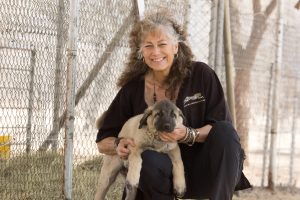
Dr. Laurie Marker with one of the Livestock Guarding Dogs bred and raised by the Cheetah Conservation Fund to give farmers in Namibia safety for their flocks.
My very special guest today is Dr. Laurie Marker of the Cheetah Conservation Fund. We discuss her work with Cheetahs and “dogs saving cats”… dogs as “emotional support” animals for Cheetahs raised in captivity, as livestock guardians for flocks in Namibia so the farmers don’t kill the Cheetahs who might otherwise prey on their stock, even dogs tracking down “scat” for research.
I first met Marker some 40 years ago when she was working in my hometown at the Wildlife Safari. What an incredible opportunity this conversation was!
LGD Program began in 1994
“We decided to celebrate the program anniversary by naming 2019 the Year of the Livestock Guarding Dog. The program holds a special place in my heart. It has been incredibly successful at mitigating human/wildlife conflict not only in Namibia but across the cheetah’s current range,” Marker said.
“Anatolian shepherds were chosen for many reasons,” Marker notes on the organization’s website. “The breed has a 6,000-year pedigree and history of guarding sheep in Turkey. Their short coats protect them from thorns and bushes being caught in their coats, and make it easier for them to adapt to fluctuating temperatures – both hot and cold. Their independent nature and ability to think for themselves means they don’t need to have people with them to successfully guard their livestock. They were the best choice for the conditions faced on Namibian farmlands. They have the will and drive to travel vast distances with their herd due to their natural loyalty and endurance.
In February, 1994, four Anatolian shepherds, the breed of dogs used in the research that took place in Oregon, were established with herds of sheep and goats here in Namibia. The dogs were donated by the Birinci Kennels in the USA.”
Endangered species and endangered breeds
The LGD program has since placed close to 700 dogs with farmers in and around Namibia. Marker said she has seen a dramatic decrease in the number of big cats killed to protect livestock and a stabilization of the numbers in this critically endangered species. Fewer than 7500 Cheetahs are believed to exist in the wild.
Listen to the podcast for more of this outstanding discussion.
Amazingly, genetic diversity concerns of the same kind we face with purebred dogs are also an issue for these unique big cats. Learn more about Marker’s Cheetah Studbook!


